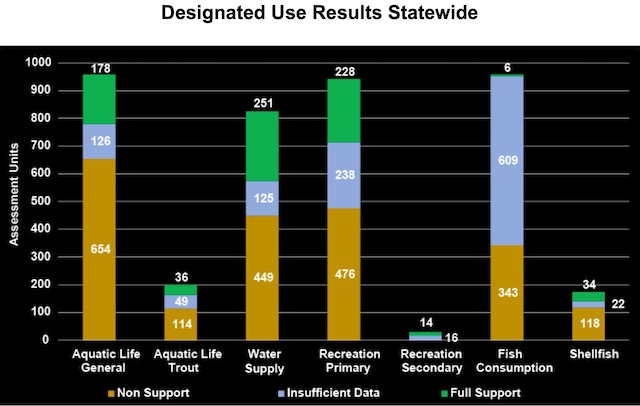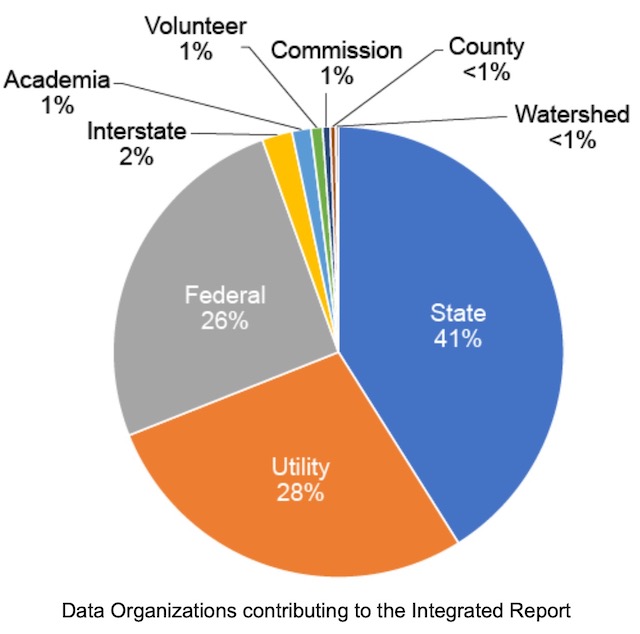The NJ State Department of Environmental Protection (DEP) has successfully flouted numerous NJ State environmental laws that mandate the DEP submit annual public Reports to the Legislature about the Department’s performance in enforcing State environmental laws, e.g. Reports required by the NJ Clean Water Enforcement Act, the Private Well Testing Act, the Right To-Know and Pollution Prevention Acts, toxic site cleanup priorities, the “Doria” Permit Report, et al.
The DEP issued the last “Doria Permit Activity Report” in 2006 – 15 years ago!
Those annual Reports provided important information to the public, the media, and legislators about critical environmental issues and served to hold DEP and corporate polluters accountable.
Historically, they became an embarrassing spectacle of bad press, as the Reports invariably revealed that NJ’s huge pollution problems persisted, that polluters were making little progress in reducing pollution yet were not being subjected to strict enforcement by DEP, and that DEP rubber stamped 95% of permit applications despite severe air and water pollution, while failing to consider critical issues like climate change and environmental justice.
Historically, Tom Johnson would have a front page Star Ledger story, often published the day after the DEP issued the Report.
So DEP simply just stopped issuing them. Many of the links to these Reports are dead on DEP’s website. Down Orwell’s Memory Hole!
And the media just stopped reporting on them. Or reporting on DEP’s failure to issue them (with one exception, where I successful pitched this issue to an AP reporter).
And Foundation funded environmental groups stopped working on these issues.
But, DEP can not simply flout federal environmental laws that mandate that DEP issue various public Plans and Reports. DEP must comply and issue those Reports (or the EPA would withhold federal funding which provides over 25% of DEP’s budget, last time I looked).
I recently wrote about a critical State Implementation Plan mandated by the federal Clean Air Act, see:
Yet media completely ignored it. [Note: Just like they ignored DEP’s proposed Statewide Forest Action Plan to manage NJ’s forests.]
Earlier this week, DEP released for public comment a major biennial Report mandated by the federal Clean Water Act, see:
Will the media completely ignore that too? They missed DEP Statewide plans for air, water, forests. What else can they miss?
Will these dirty air and water Reports force environmental groups and their Foundation funders to reconsider their current issue focus and priorities? Why are no environmental groups working on these fundamental issues? Why are no Foundations funding this work?
We’ll be digesting that DEP Dirty Water Report in future posts. For now, after a cursory review, I want to very briefly highlight just the most glaring deficits in the DEP Report:
1. DEP Again Delayed A Cleanup Plan for Barnegat Bay
Over a decade ago, a Rutgers scientist testified to the legislature, warning that Barnegat Bay was on the verge of ecological collapse. He criticized Gov. Christie’s Management Plan and urged the DEP to significantly ramp things up, see:
The federal Clean Water Act requires that when a waterbody does not meet water quality standards (technically know as “impaired), DEP is required to develop and enforce a cleanup plan, known as a Total Maximum Daily Load (TMDL).
But DEP has flouted this mandate for over a decade and simply has refused to develop a TMDL for Barnegat Bay. It was so blatant, even EPA was forced to reject DEP’s plans.
In this 2018-2020 Report, DEP again defers and delays a TMDL cleanup plan for Barnegat Bay. DEP classifies the Bay a “medium” priority for a TMDL. It will be at least 2-4 more years before a TMDL is even begun. We told you this was coming 3 years ago.
2. DEP Ignores Harmful Toxic Algae Blooms In Lakes And Coastal Waters
For the last few summers, everyone knows that many NJ lakes have been closed due to toxic Harmful Algae Blooms (HAB’s).
Already, HAB’s proliferated this year, before summer even began.
Yet the DEP Report, which is supposed to provide public information about the health of NJ waters and set priorities for the protection and cleanup of critical State waterways – ignores HAB’s.
While DEP has issued various press release and purely voluntary State plans on HAB’s, because they are not regulatory under NJ State law and they not included in this Report, they are not subject to federal EPA oversight and are not federally enforceable.
That critical lack of federal oversight applies to all the other issues I mention here that DEP has ignored by failing to include them in this CWA Report.
Lake Hopatcong, another highly significant State waterbody, also is ranked a MEDIUM PRIORITY for TMDL cleanup – and there is no mention of HARMFUL ALGAE BLOOMS THAT IMPAIR THE LAKE!
[Note: DEP adopted a weak “framework” nutrient TMDL in 2003 for Lake Hopatcong and otters lakes, but it was never implemented or enforced and has been virtually ignored by DEP, EPA, environmental groups and the media. Do they even know it exists? More on that in a forthcoming post.]
Toxic Harmful Algae Blooms also threaten coastal water, bays and NJ seafood, see:
DEP ignores all this.
Worse, DEP is not proposing any NEW NUTRIENT REDUCTION TMDL mandatory pollution ratchet downs for so many freshwater Lakes and Bays that are suffering TOXIC ALGAE BLOOMS.
3. DEP Is Violating federal Clean Water Act Cleanup Plan Requirements
The DEP Report provides several examples of DEP’s attempts to delay or completely avoid mandatory TMDL cleanup plans under the CWA.
For example, this DEP policy is an end run around and a violation of the Section 303 of the Clean Water Act:
“Sublist 5R – Development of a watershed restoration plan can be an effective alternative to a formal TMDL”
“Effective alternative”?
This DEP policy also is a blatant violation of Section 303 of the Clean Water Act:
“Waters that exceed SWQS require the development of total maximum daily loads (TMDLs) or other alternative approaches to address the impairment”
“Other alternative approaches”?
4. DEP Is Ignoring The Impacts Of Climate Change On Water Quality
Everyone now knows that climate change is now having and will have even worse major impacts on, among other things, water resources.
Yet, DEP Report simply ignores all that science.
Unbelievable.
5. DEP Is Ignoring The Impacts Of Toxic Unregulated Chemicals, Like Pharmaceuticals and Endocrine Disruptors
Unfortunately, not everyone knows that DEP knows that there are over 500 unregulated chemicals present in NJ waters and that those chemicals have unknown toxic effects on ecosystems, fisheries, and human health.
For the human health implications, I remind readers that the Toms River childhood cancer cluster was caused by unregulated chemicals.
For the ecological implications, see:
The two major categories of those unregulated chemicals are pharmaceuticals and endocrine disruptors.
For the implications of endocrine disruptors, see:
For the implications of pharmaceuticals, see:
The DEP Report simply ignores all that science.
Unbelievable.
6. The Large Majority of NJ Waterways Remain Severely Polluted
(see above chart)
7. Voluntary and Local Watershed Efforts Have Failed
Since the 1996 Watershed Management Act (a law which unfortunately I must confess I wrote), DEP has largely abandoned their mandatory planning and regulatory tools in favor of voluntary, local, watershed planning.
That law provided funding, which has fueled the growth of local watershed groups across the State. State money is compounded by Foundation grant funds. The Foundations also fund voluntary local efforts, not State DEP regulatory mandates.
The watershed program has been a total failure (i.e volunteer and watershed groups provide less than 2% of the water quality data DEP relies on. Which also validates my criticism that environmental groups have just stopped working on these issues).



Pingback: WolfeNotes.com » Flawed $10 Million Lake Funding Bill Now On Gov. Murphy’s Desk Diverts Money From Highlands And Pinelands
Pingback: WolfeNotes.com » NJ Spotlight Prints Chemical Industry Lies On Drinking Water Standards – The Industry Cost Issue Now Expands Into Public Health Protections
Pingback: WolfeNotes.com » Endocrine Disruptor Study Buried At The Pinelands Commission
Pingback: WolfeNotes.com » EPA Funds Murphy DEP To Study Salt Marsh Ponds – Not Man Made Pollution – As A Cause Of Harmful Algae Blooms